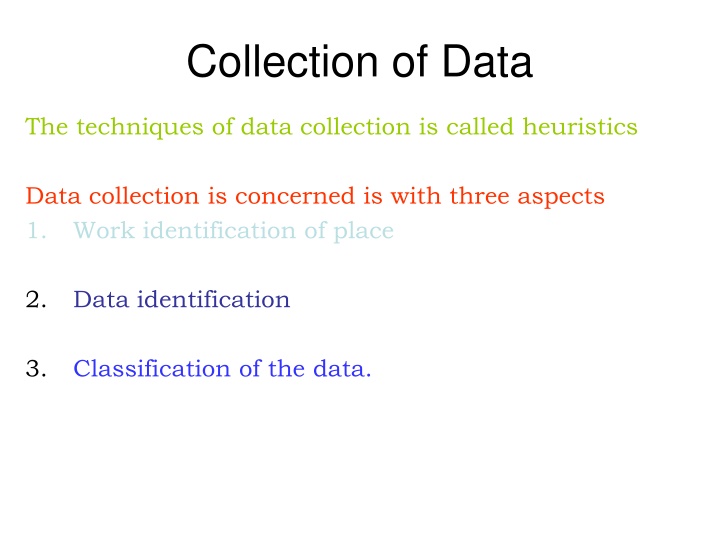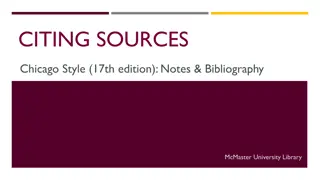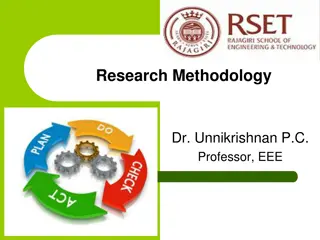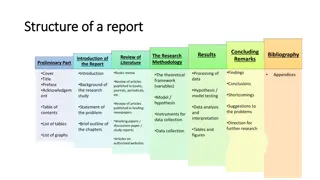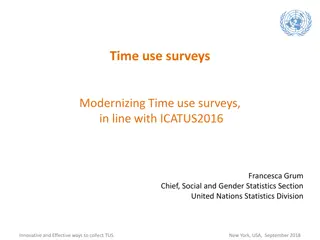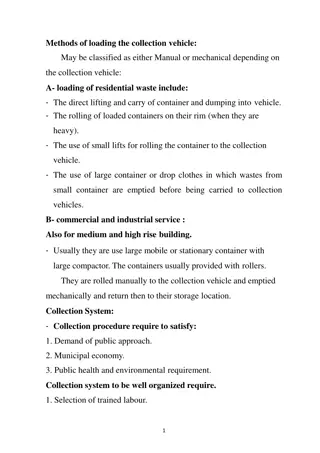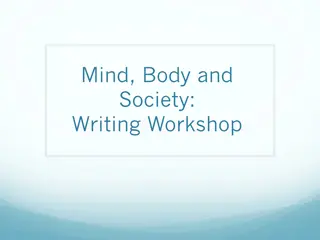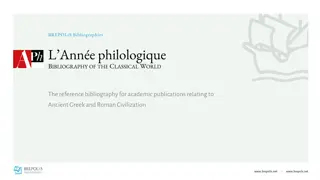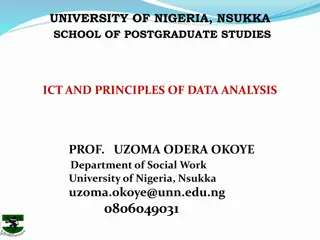Techniques and Principles of Data Collection and Bibliography Organization
Data collection involves identifying sources, classifying data, and working with primary and secondary sources. Researchers should utilize archives for primary sources and maintain a bibliography to track references properly.
Download Presentation

Please find below an Image/Link to download the presentation.
The content on the website is provided AS IS for your information and personal use only. It may not be sold, licensed, or shared on other websites without obtaining consent from the author.If you encounter any issues during the download, it is possible that the publisher has removed the file from their server.
You are allowed to download the files provided on this website for personal or commercial use, subject to the condition that they are used lawfully. All files are the property of their respective owners.
The content on the website is provided AS IS for your information and personal use only. It may not be sold, licensed, or shared on other websites without obtaining consent from the author.
E N D
Presentation Transcript
Collection of Data The techniques of data collection is called heuristics Data collection is concerned is with three aspects 1. Work identification of place 2. Data identification 3. Classification of the data.
Classification of data (sources) Sources are classified into two types (i) Primary (ii) Secondary Primary Sources Primary sources are unpublished original material, contemporary records, journals, official transactions, minutes, proceedings, private letters, Archeological evidences, inscriptions, coins, literary evidences, foreign accounts, Folklore, ballads Secondary sources Secondary sources are published work in material form like books, journals, and later works.
Work Identification of data Most of the primary sources were available in State Official record repositories called Archives. In archives a researcher can get original records about an events, important statesmen, administrators, government policies etc Popular Archives: Government Archives 1. British Record Office, London, India Record office London, National Archives, New Delhi, Regional Archives in states. Institutional Archives: 1. Jesuit Archives in Senbagnur (Kodaikannal) 2. DRM Railway Archives Trichy 3. AIR Sound Archives Trichy
Preparing Bibliography Preparing bibliography gives a research scholar an idea of the range of materials on the subject. The bibliography work is a continuous process. It requires periodic addition. A bibliography is prepared by using the card catalogues system like indexes used in libraries Here also a scholar should use the card system. Copy each title on a separate card generally 3x5 inches, keep these cards in alphabetical order different kind of bibliography would be required from that of area of research history
Bibliography Bibliography means is a list of the books referred to in a scholarly work. The Relevant Sources are listed. In writing bibliography certain principles are formulated for the citation of sources. Reference to Published Work. 1. Name of the Author starts with Intials, 2. Title of the Work(Italic), 3. Volume Number & Part(if any) 4. Publishers name, 5. Place of Publication, 6. Year of Publication, 7. Page number.
Ex. To Reference to Published Work 1. V.A. Smith, Catalogue of the coins in the Indian Musuem, Oxford, 1906, p-131 2. B. N. Mukherjee s, Commentary on H.C. Raychaudhari s Political history of Ancient India, 8thEdn, New Delhi, 1996, pp-592-6
Reference to an Unpublished Thesis 1. Name of the Author with Initials, 2. Title of the Thesis,(with in Quotations) 3. Degree for which the thesis was submitted, 4. Name of the University, 5. Year of Submission, 6. Page number.
Ex.Reference to an Unpublished Thesis 1. Sanjukta Das Gupta, A middle Indian Tribe in Transition: The Ho of Singbhum, 1831-1932 , Ph.D. thesis,Calcutta University, 2006, Chp.2, p-22 2. K. Chandran, Working Class Movement in Kerala ,Ph.D. Thesis, M.K. University, Maduari, 1990, p-273
Reference to an Article 1. Name of the author(contributor) with Initials, 2. Title of the article,(in Double Quotations) 3. Title of the Journal,(Italic) 4. Serial Number, 5. Place, 6. Year of Publication, 7. Page Nunber.
Ex. Reference to an Article 1. Iqtedar Alam Khan, Middle Class in Mogul Empire , The Proceedings of the Indian History Congress, Aligarh Session (Aligarh,,1975), p-50 2. M. Rama Rao, Religion in Ancient Andhradesa , Oriental Journal, VOL.VII,(Kavali,1964), pp50-55
Reference To Inscriptions 1. Name of the Source(add if any editor name mentioned),-Italic 2. Source location in brackets, 3. Number of Volume, 4. Number of Plate or pages
Ex. Reference To Inscriptions 1. Inscriptions of the Vakatakas, corpus Inscriptionum Indicarum, Vol.V, ( Archaeological Survey of India, Ootacamund, 1965), p-22f 2. H. Krishna Sasatri,ed, South Indian Inscriptions, (Manuscript Library, Madras), Vol-II, plate-6
Reference to Archival Sources 1. Name of the Document, 2. Number of the document/file, 3.Date of the document issued, 4. Page number, 5. Place of source Location.
Ex. Reference to Archival Sources 1. Home Political Deposit, File no.21/ File nos242- 249, May 1918, p-96,(National Achieves of India) 1. Public, G.O.342, 18/4/1918, p-4(Tamil Nadu state Achieves)
Reference to Letter 1. Name of the person who wrote, 2. To whom it was written, 3. Place and date 4. Present location of citation
Ex.Reference to Letter H. Harrison, Letter to War department, Indian Affairs, Vol. IV, 18thNovember, 1786, NAI
